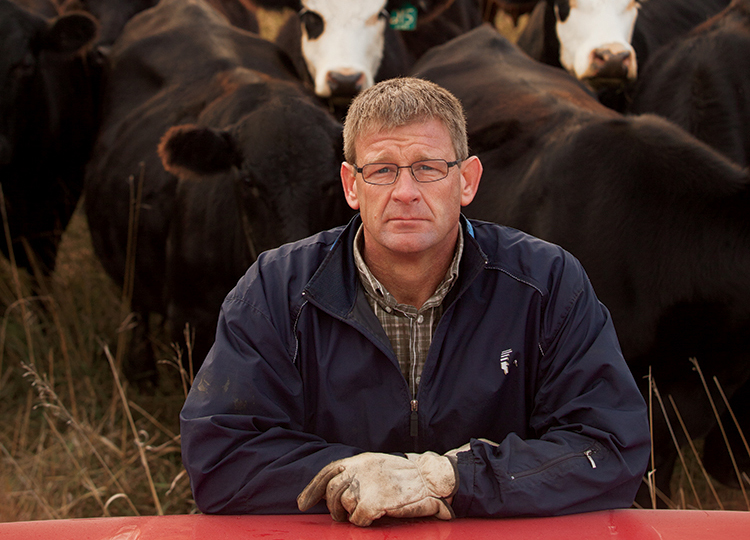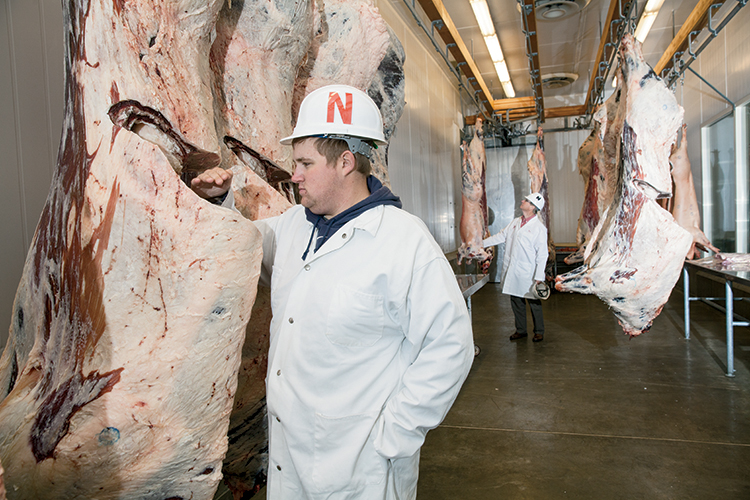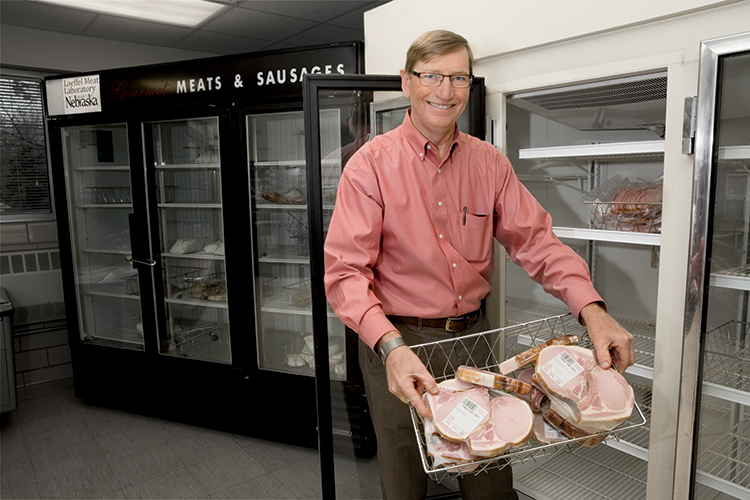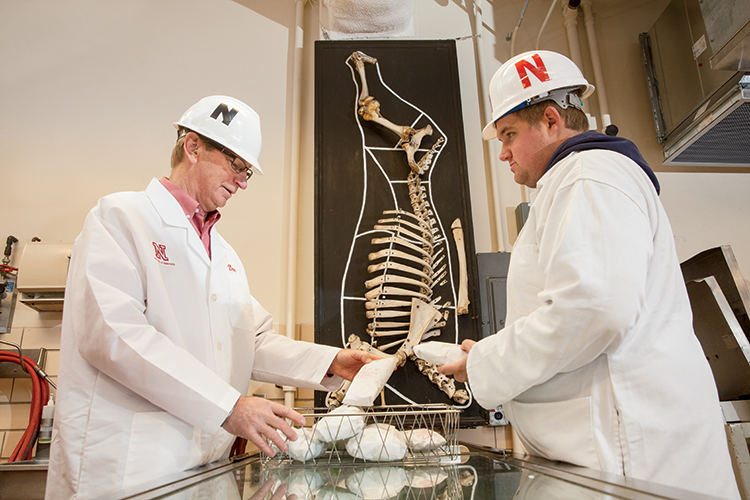Home > Nebraska > Nebraska Crops & Livestock > The Meat of the Matter in Nebraska
The Meat of the Matter in Nebraska

Nebraska’s beef and pork producers have heard the call for healthier choices at the meat counter. In addition to caring for their livestock, they are also taking care to raise more nutritious options for consumers.
“Pork used to be considered a fattier meat, but today it’s a completely different product,” says Jane Stone, domestic marketing director for the Nebraska Pork Producers Association. “Pork producers have changed the way they breed and feed their animals to make a leaner product.”
Likewise, beef producers have partnered with university researchers to bring better beef to consumers’ tables.
“We’ve greatly improved the nutritional value of meat over the past 50 years,” says Dr. Chris Calkins, a meat scientist at the University of Nebraska – Lincoln.

Raising the Steaks
Beef – the state’s top industry – contributes more than $12 billion to Nebraska’s economy each year. “About one in five steaks comes from Nebraska, so beef has a huge economic impact,” Calkins says.
In the late 1990s, Calkins and colleagues at the University of Florida and the National Cattlemen’s Beef Association embarked on a muscle-profiling project.
“We found that some muscles being ground into hamburger were the quality of good steak,” he says. This study led to the introduction of the flat iron steak in 2002. Today, restaurants sell 80 to 90 million pounds of the cut each year.
By focusing on individual muscle cuts of meat, shoppers are presented with much healthier options. Of 21 cuts of steak, 15 are designated lean, including T-bone, sirloin and strip steaks, which are great for the grill, and flank steak and three kinds of round steaks, perfect for marinating. In fact, any beef cut with the word “round” or “loin” in the name signifies a lean option.

“The amount of fat being sold by grocers is much reduced,” Calkins says, “but all that has happened behind the scenes where the customer doesn’t see.”
Most customers are also unfamiliar with how the animals are raised on the farm. Fourth-generation cattle farmers Kristen and Todd Eggerling of Bluestem Valley Farms near Martell are working to dispel some common myths.
“People have the misconception that farming is all corporate,” Kristen Eggerling says, “but here in America, 98 percent of farms and ranches in the U.S. are owned by families like ours.”
The Eggerlings, who have a 150-head cow herd, have created YouTube videos to help consumers understand cattle care.
“Cattle aren’t like pets – they’re made to live outside in the elements like raccoons or deer,” she says. “As beef producers, we follow protocol for how we manage our cattle, because healthy animals make healthy food. We know exactly what each animal needs each day, from how much feed to what nutrients.”

Almost all cattle feed is locally grown, says Dr. Galen Erickson of the University of Nebraska – Lincoln. In addition to being produced in Nebraska, the feed contributes to higher quality beef.
“High-energy feeds, such as corn, milo or grain sorghum, wheat and barley, are very good at increasing marbling of cattle,” he explains.
Marbling refers to the specks of fat in meat – but not necessarily the bad kind of fat. Stearic, a fatty acid very prevalent in beef, actually lowers blood cholesterol and LDLs.
Marbling also ties into the different quality grades such as prime and choice, which predict the tenderness of steak.
SEE MORE: Interactive Butcher Counter Explains Grades of Beef
“Higher quality cattle also don’t get sick as much, they perform better and they’re more efficient, meaning it takes less pounds of feed to put on weight,” Erickson says. “There’s a tremendous incentive for producers to keep cattle healthy and thriving.”

Pork’s Heart-Healthy Benefits
Nebraska’s pork industry generates about $775 million in cash receipts annually, and the state ranks sixth in the nation for pork production. Like their cattle-owning counterparts, hog farmers have worked steadily to offer healthier and more flavorful choices for consumers.
“If you go into a modern hog barn, you’ll find producers are consulting nutritionists about feed and rationing,” says Jane Stone with Nebraska Pork Producers.
Terry and Diane O’Neel raise hogs on their 750-acre farm near Friend, Neb. Today they have more than 500 sows (female pigs) in their birth-to-market operation. Like most pig farmers, they raise their animals indoors “to protect them from predators, parasites, sunburn, rain and snowstorms,” Terry O’Neel explains.

Innovations in breeding and feeding have also evolved on the family’s farm. “Pork has been made much leaner over the last 20 years by the use of genetic lines that have less back fat and more lean muscle,” O’Neel says. “We also have modified the pigs’ diet to allow the pig to express its genetic potential.”
That, in turn, means more nutritious pork for the public. A 2006 USDA study found that six common cuts of fresh pork are, on average, about 16 percent lower in total fat and 27 percent lower in saturated fat than they were in 1991. These cuts are the boneless top loin chop, top loin roast, center loin chop, sirloin roast, rib chop and tenderloin.
“Pork tenderloin recently received the American Heart Association’s seal of approval,” Stone says. “It’s considered a heart-healthy food that is actually lower in fat, calories and cholesterol than a boneless, skinless breast of chicken.”



